By MSc Gvapo Tripinovic and Adam Tripinovic
Hello everyone, and welcome back to our blog ParentingDad.com!
Today Adam and I have prepared for you another exciting article and video about Red Pandas!
Let’s answer together the most interesting questions about one of the cutest animals on Earth!
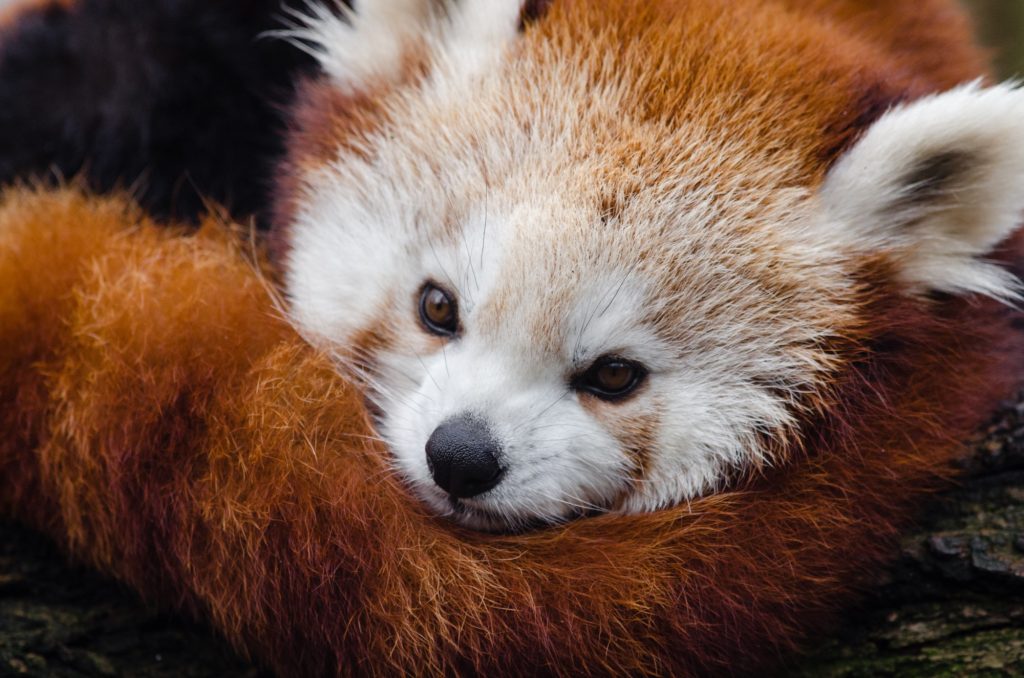
What are Red Pandas, and where do they live?
Red pandas are small mammals that live in the Himalayas and southwestern China.
Red pandas are known for their distinctive red fur, fluffy tails, and cute, round ears.
Despite their name, they are not related to giant pandas.
Red pandas live in bamboo and mountain forests between 6.000 and 12.000 feet or about 1.820 and 3.660 meters above sea level. Their habitat extends from western Nepal and northern Myanmar to central China. They spend most of their time in trees.
How large are red pandas?
Adult red pandas grow up to 25 inches or 64 cm long.
Males weigh up to 13.7 pounds or 6.2 kg, while females are slightly smaller.
Their tail length varies, ranging from 11–23 in or 28 to 59 cm long.
Why is a Red Panda called a Red Panda?
Red pandas are so-called because of their distinctive red fur.
Their back and sides have reddish-brown fur, while their bellies are white, and their legs and tails are black.
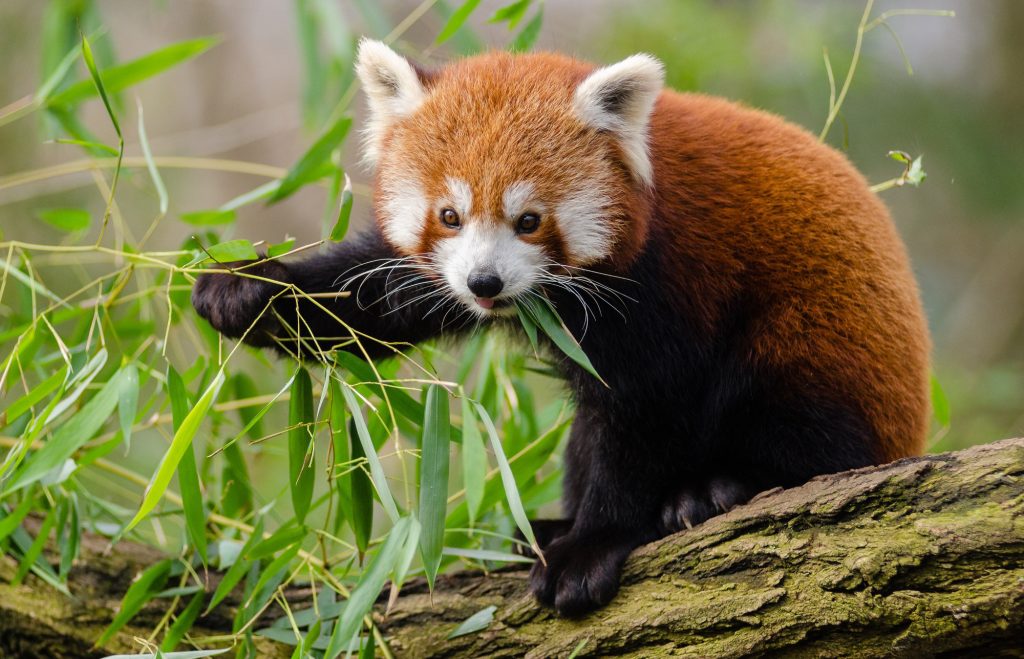
What do Red Pandas eat?
Red pandas are primarily herbivorous but will not be shy to eat insects, small mammals, and bird eggs when available. Red pandas, unlike giant pandas, have a digestive system that can digest meat and other carnivorous foods.
But don’t let this make you see them differently, as bamboo leaves, shoots, fruits, and berries still make up to 95% of their diet.
How do Red Pandas eat?
Red pandas have a unique way of eating bamboo.
They hold the bamboo stems with their front paws and pull the leaves off with their claws. Then, they roll the leaves into a ball, use their tongues to peel off the tough outer layer and get to the nutritious inner layer.
That way, red pandas eat up to 200,000 bamboo leaves in a single day!
What are the unique adaptations of Red Pandas?
Red pandas are excellent climbers and spend most of their time in trees.
They have developed several amazing body adaptations that help them survive in their bamboo forest habitat.
Red pandas have retractable claws and a special adaptation in their ankles, allowing them to climb up and down trees headfirst.
They can even rotate their ankles 180 degrees, which helps them hold onto branches firmly and move in all directions with ease. Similar to what squirrels can do.
What are the threats to Red Pandas?
Red pandas are listed as endangered on the IUCN Red List, with only about 10,000 left in the wild.
One of the biggest threats to red pandas is habitat loss due to human activities of deforestation and fragmentation of their habitat. They are hunted for their beautiful fur and captured for the illegal pet trade.
Climate change is not helping as it alters their habitat and food sources.
Will Red Pandas really go extinct?
The population of red pandas has declined by 50% over the past 20 years and still declining. If the conservation efforts fail, there is a high probability red pandas will go extinct within our lifetime.
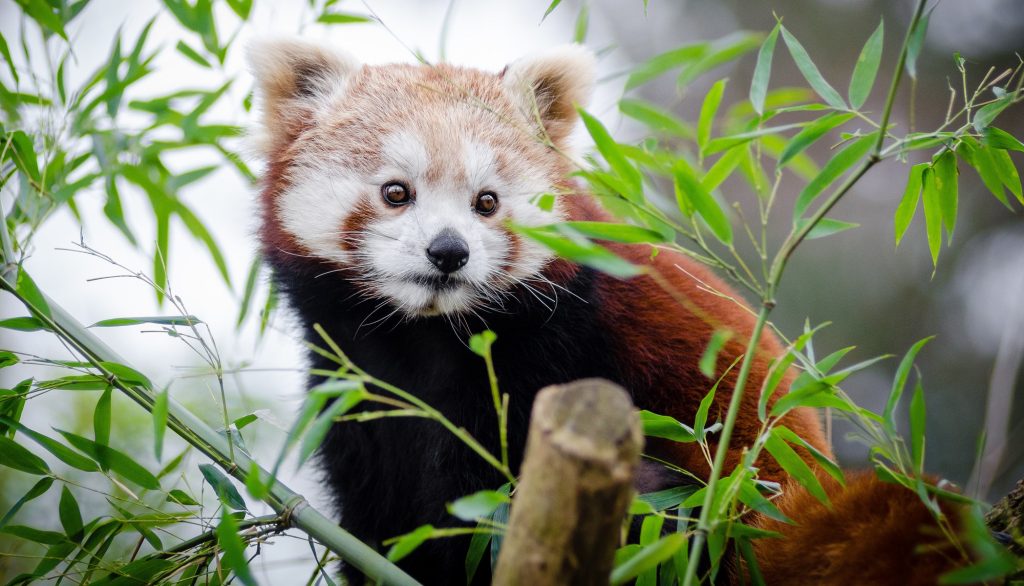
What is being done to protect Red Pandas?
Conservation organizations are working hard to preserve their habitat and raise awareness of how to save them from extinction. Still, more public involvement should support these activities.
Some zoos have breeding programs to help the number of red pandas grow with the aim that some of them be released back into the wild.
Adam and I are also trying to do our part by making this article and videos. You can help too by spreading the information about it.
When is Red Panda Day?
Red Panda Day is celebrated on the third Saturday of September every year. The main aim of this celebration is to raise awareness about red pandas’ conservation efforts and save these adorable animals from extinction.

Where were Red Pandas discovered?
At the beginning of the 19th century, European explorers discovered red pandas for the first time in the Himalayan area of Nepal and India. They were later found in other parts of the Himalayas and southwestern China.
Of course, for the local population of that area, red pandas were the animals they were familiar with a long time before Europeans arrived. Keeping this in mind, we can find stories about red pandas in Chinese mythology written long before the 19th century.
Will Red Pandas attack humans?
Red pandas are typically not aggressive toward humans and will not attack unless threatened or cornered. But it would help if you remember that they are wild animals and should be treated with care and respect. The best way is always to watch them from a distance and avoid direct interaction.
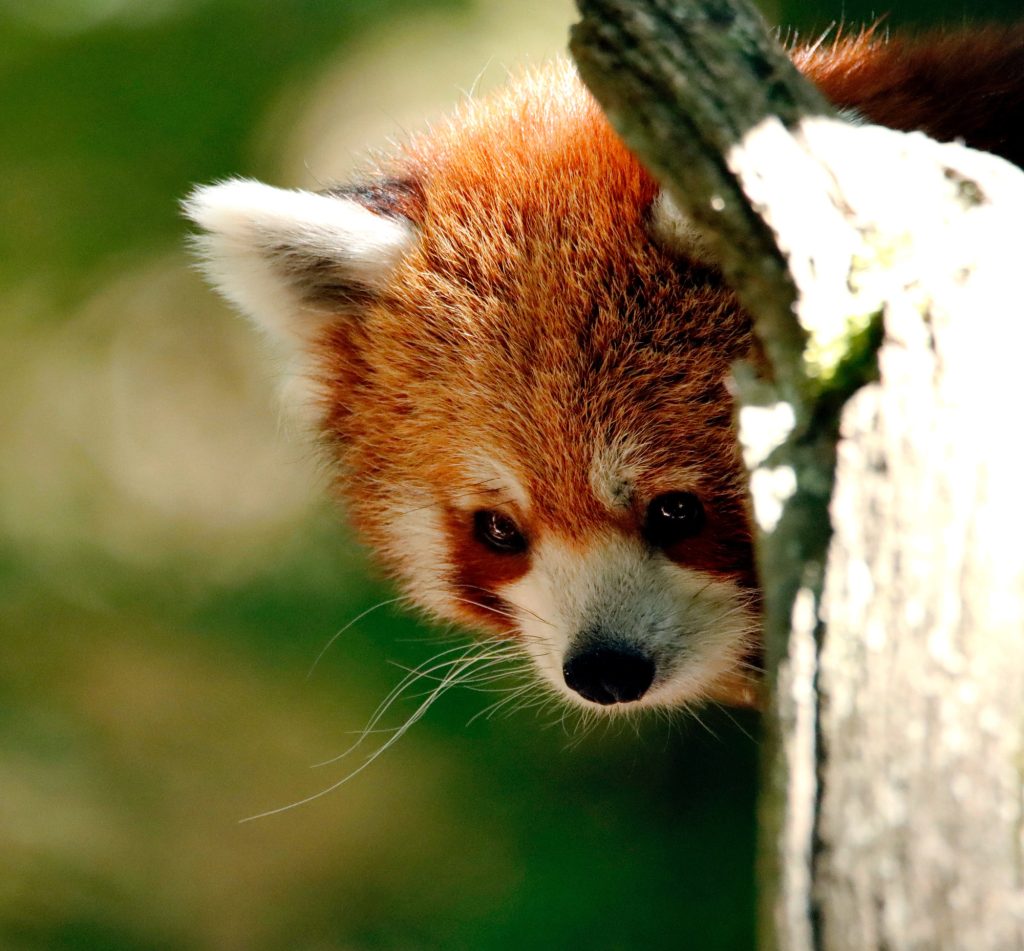
Is it a Red Panda bear, a fox, or a raccoon?
Red pandas are neither bears nor foxes.
Despite their name, they are actually more closely related to raccoons and weasels.
How do Red Pandas live?
Red pandas are arboreal animals, meaning they spend most of their time in trees. They move through the trees and make nests out of leaves and twigs.
Red pandas are solitary animals active mainly during the day and eat more than 13 hours daily!
Can a Red Panda be a pet?
Red pandas are wild animals and should not be kept as pets.
In many countries, it is illegal to own them as pets since they are endangered species. Trying to keep them as pets can also stimulate their illicit trafficking, which is one of the leading causes of their existential threat to red pandas.
Can Red Pandas swim?
Although not great swimmers, red pandas can cover short water distances if needed.
They typically avoid water and prefer to live cozy in tree canopies.
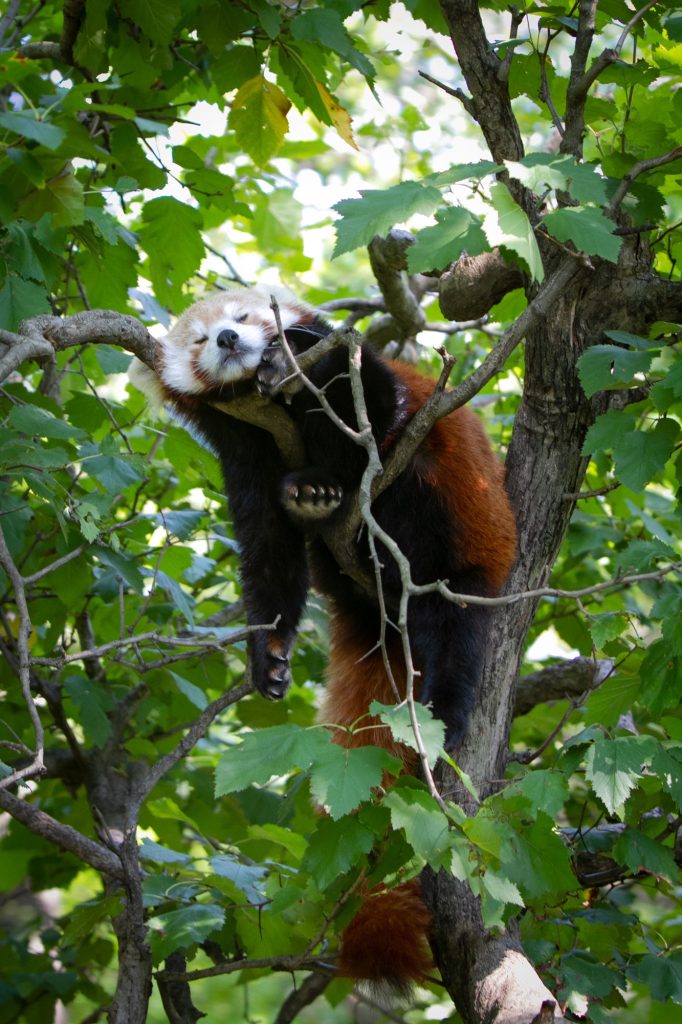
Why do Red Pandas put their arms up?
Red pandas are well-known for their endearing habit of standing on their hind legs with their front paws raised in the air.
This behavior is considered as a form of stretching and exercise, a way to mark their territory, and, quite often, simply a way to play.
What is the difference between a Red Panda and a Panda?
To put it mildly, red pandas and giant pandas are not related, despite sharing a name and a diet of bamboo. They don’t even look much alike.
While giant pandas are a type of bear, red pandas are more closely related to raccoons and weasels. Additionally, giant pandas are much larger than red pandas. They also have black and white fur, while red pandas have reddish-brown fur.
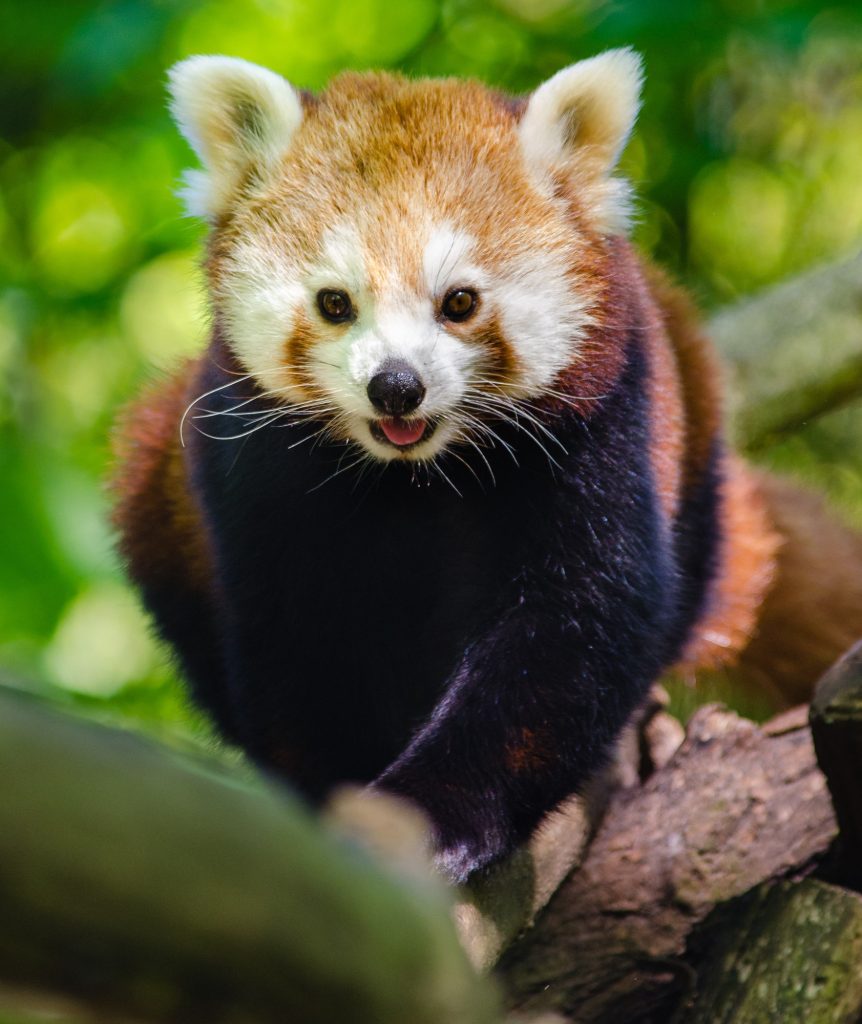
Red Pandas and Kids
Red pandas continue to capture children’s hearts due to their undeniable cuteness look and playful nature. But it’s important to teach kids about the importance of conservation and the risks these animals face.
Children can play an essential role in preserving red pandas and their habitats for future generations by learning about the animals and taking action to support conservation efforts.
This article and the videos Adam and I made are precisely that. They are our little part in helping conservation efforts to save red pandas. Please help us by sharing it with other caring people you know.
We hope you have learned something interesting about red pandas today with us, and thank you for your support!
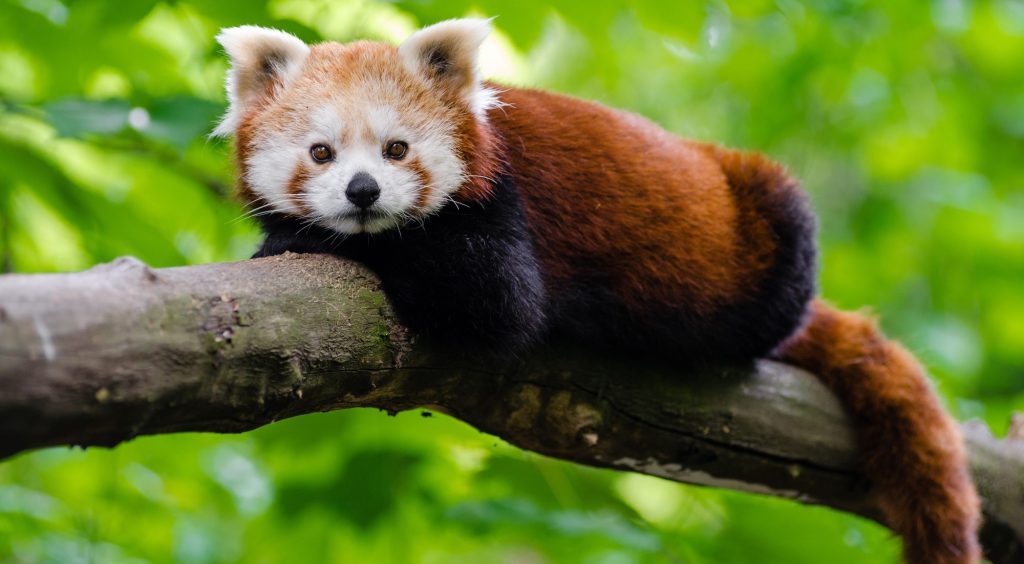
While here, please check some of our other Educational, Active Life and Healthy Food, or How to be a Better Dad – Q & A articles.
If you’d rather watch a video or listen to our articles, check out our YouTube channel, Top 10 Facts.
You can find more great articles and videos about animals here:
Alpacas, Butterflies, Cheetahs, Dolphins, Do Fish Sleep, Dog – Which dog breeds are the smartest, Elephants, Great White Sharks, Sharks in aquariums, Snakes, Hummingbirds, Jellyfish, Lions, Pigeons, Red Pandas, Owls, Seagulls, Snails, Squirrels, and Wolves.
What animals would you like us to describe next?
Tell us in the comments below!
Adam and I wish you a great day. Stay well, and keep smiling.
This article might contain product links, so we can get a small commission if you buy them. That way, you support this blog and our educational YouTube channel, for which I am thankful.

